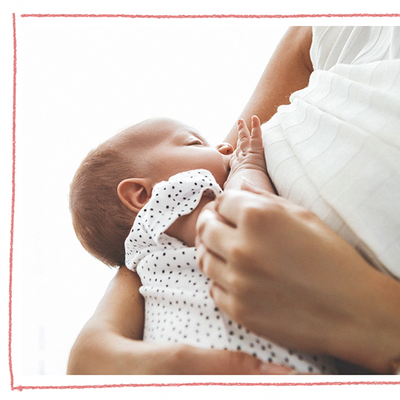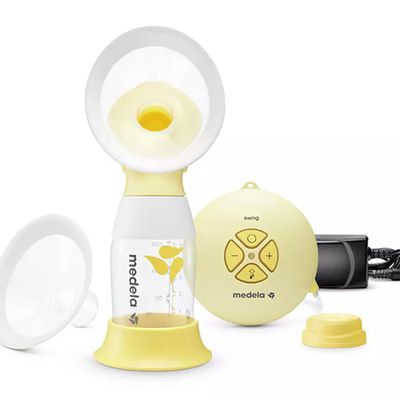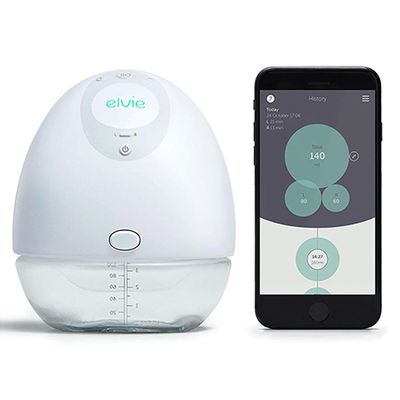
Breast Vs. Bottle: What You Need To Know

National health advice stills dictates that ‘breast is best’, with the World Health Organisation (WHO) and UNICEF both recommending babies are breastfed exclusively until at least six months old. From natural antibodies, to added convenience, there are a range of reasons why this advice exists to this day.
Think Of It As Nutrition Made Easy
Breast milk is full of lactose, protein (whey and casein) and fat, as well as a range of vitamins and minerals – all of which are easily digested by a new born. Breast milk is also specifically tailored to your baby’s needs – it’s just not scientifically possible to recreate the complexity of that unique blend in a formula.
It Contains Antibodies
Breast milk is safe, clean and contains antibodies, which can help to protect your baby against many common childhood illnesses and allergies.
Convenience Is Built In
It’s great to be able to feed a baby without the faff of sterilising bottles and warming up night feeds, not to mention it’s also completely free. The cost of formula can add a considerable sum to your weekly food shop, along with all the extra equipment, too.
The Baby Learns New Tastes
The taste of breast milk changes depending on what the mother is eating, so it’s an easy way to introduce the baby to a wide variety of different flavours. This can prove particularly helpful when it comes to weaning and getting a toddler to try solid foods.
It’s Good For You, Too
Breastfeeding mums have to consume an extra 300 calories on average when feeding their babies, and it’s a well-known fact that breastfeeding helps to shift those post-partum pounds in a healthy, happy way. At the same time, on an emotional level, there’s something very bonding about the skin-to-skin contact that comes with breastfeeding.

There are many reasons why women choose formula to feed their babies – many mothers turn to this solution after struggling to breastfeed. In fact, a recent study published in the Maternal and Child Health Journal found a connection between mothers who planned to breastfeed, struggled and then went on to develop postpartum depression. So, it’s important mothers don’t beat themselves up for choosing formula. Anything from a low milk supply to going back to work can prompt this decision, while some mothers simply choose to do it this way from the outset.
There Can Be Multiple Caregivers
Once the bottles are made, a formula-feeding mother can leave her baby with a partner or alternative caregiver, knowing that the baby will be well fed. It’s also an opportunity for the father to bond with the baby, in a way many dads rarely get to experience. Just remember, most experts – as well as official advice from UNICEF – encourage mothers leave feeding responsibilities only to another parent when using formula, so as to encourage child-parent bonding.
It’s Also More Convenient
Unlike mothers choosing to breastfeed, there’s no need to find a quiet, private place to feed when you find yourself in public. It’s also far less likely your schedule will be dictated by your baby’s feeding schedule – a pro for working mums.
You’ll Find There Are Fewer Feeds
Although formula isn't as easy for babies to digest, this does mean they usually feed less often than breastfed babies, which could be advantageous for mothers with other small children to tend to.
Your Own Diet Is More Flexible
You don’t need to worry about what you’re eating or drinking when you formula feed your baby. In fact, these days, formula milk is so advanced it provides all the nourishment a baby needs, plus some vitamins and minerals that aren’t typically found in breast milk.

For new mums, it can take a while to get used to breastfeeding – in fact it can be hugely challenging and even painful at first. If breastfeeding isn’t going well for some reason (low milk supply, poor weight gain, sore nipples, or if the baby is frequently unsettled or sleeping badly) you shouldn’t feel guilty if you stop. But do make sure you seek advice from your GP or health visitors before making a decision.
Read The Cues
With baby-led weaning, feeding always goes better if you bring the baby to you as soon as they display a feeding cue, like rooting, licking their lips or chewing their hand. By the time they’re crying, it’s always going to be more difficult for the baby to latch on.
Find A Peaceful Place
Choose a quiet corner of the house to feed. Having an allocated area can help you feel more relaxed, which helps with milk production. When you’re happy and chilled, your body releases the hormone oxytocin, which stimulates milk flow.
Get Comfortable
Before breastfeeding, it’s important to feel relaxed – both physically and mentally. Use pillows and cushions to prop up your arms so that both you and the baby are comfortable.
Make Sure The Latch Is Right
It’s very normal to find it challenging to get your baby to latch. While it might be frustrating at first, there are ways to help the process along. First, check your baby is in the best position. The head and body should be in a straight line so it’s easier for them to swallow. Make sure you support the neck and back, too, as this will make them feel secure and safe.
Correct The Position
Once in the correct position, gradually bring your baby towards your breast and allow them to latch on. Try to avoid moving your breast toward them. Your baby’s nose should also be in line with your nipple, with their head slightly tilted – this will encourage them to open their mouth wide, leading with their chin. Make sure their nose is clear and they have good contact with the breast. Babies should finish the feed themselves, usually by falling asleep. Remember, once latched, it shouldn’t be painful.

If you want to breastfeed your baby, but struggle to get them to latch, pumping can help. It’s an effective way of feeding your baby, but can also be useful if:
-
You have engorged breasts (this can cause discomfort and occurs if your body produces excess milk).
-
You have to be away from your baby but still wish to give them breast milk – for example, if you are back at work or your baby is in special care unit.
-
Your partner or someone else will be feeding the baby.
-
You want to increase your milk supply – emptying your breasts frequently increases milk production.
When it comes to using a pump, there are three options:
Manual Pumps
The mother manually pumps the milk from her breast using a hand held device. They are hard work, but can feel less intimidating than electric versions.
Nuby Silicone Manual Breast Pump, £12.99 | Nuby-uk.com
Electric Pumps
Once you get used to the whirring, women often find them easy and effective to use.
Medela Swing Flex Breast Pump, £109.99 was £139.99 | Argos.co.uk
App-Controlled Pumps
Use these to express on the go. The nifty gadget sits inside your bra, allowing you to pump quietly and discreetly, wherever you are.
Elvie Breast Pump, £249 | JohnLewis.com

It’s important to introduce your baby to a bottle fairly early on, whether it be with breast milk or formula. If done around six weeks, most babies will be happy to be bottle-fed when the time comes. It’ll also allow for a bit more flexibility, especially if new mothers have to take medication that isn’t compatible with breastfeeding, or want to let their husbands, grandparents or other childcare providers take over.
If you find babies are struggling to take a bottle, set aside a 24-hour period to address the problem. If the baby is older than six months, try not giving them anything to eat or drink for around three hours – by this point, they’ll usually be hungry enough to want to feed. Also, make sure you have a variety of bottles and teats available to see which one might suit best (fast flow teats usually help). Then, sit the baby upright on your lap so they don’t choke, but get someone else to distract them – either with a rattle or a toy – so their attention isn’t focused entirely on the bottle. Finally, be kind to yourself and relax in the knowledge that most babies do learn to take a bottle eventually.
Anyone struggling to feed a new born or infant should consult their GP or midwife. For more information, click here.
Visit ClareByam-Cook.com
DISCLAIMER: We endeavour to always credit the correct original source of every image we use. If you think a credit may be incorrect, please contact us at info@sheerluxe.com.




